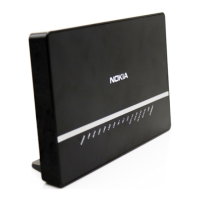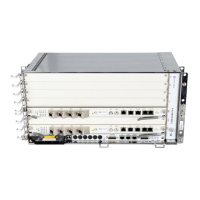Virtual Private Routed Network Service
454
FD 100/320Gbps NT and FX NT IHub Services Guide
3HH-11985-AAAA-TQZZA Issue: 13
7.10.2.7 router-advertisement
Table 417 router-advertisement command
Description This command specifies the maximum number of remote routes that can be held within a VPN
routing/ forwarding (VRF) context. Note that local, host, static and aggregate routes are not
counted.
Note that the VPRN service ID must be in a shutdown state in order to modify maximum-routes
to lower than the existing routes in the route table. Otherwise an error message will be
returned.
If the log-only parameter is not specified and the maximum-routes value is set below the
existing number of routes in a VRF, then the offending RIP peer (if applicable) is brought down
(but the VPRN instance remains up). BGP peering will remain up but the exceeding BGP
routes will not be added to the VRF.
The maximum route threshold can dynamically change to increase the number of supported
routes even when the maximum has already been reached. Protocols will resubmit their routes
which were initially rejected.
The no form of the command disables any limit on the number of routes within a VRF context.
Issue the no form of the command only when the VPRN instance is shutdown.
Default 0 or disabled — The threshold will not be raised.
Parameters number — An integer that specifies the maximum number of routes to be held in a VRF
context.
Values: 1 — 32768
log-only — This parameter specifies that if the maximum limit is reached, only log the event.
log-only does not disable the learning of new routes.
threshold percentage — The percentage at which a warning log message and SNMP trap
should be set. There are two warnings, the first is a mid-level warning at the threshold value
set and the second is a high-level warning at level between the maximum number of routes
and the mid-level rate ( [mid+max] / 2 ).
Values: 0 — 100
Item Description
(2 of 2)
Item Description
Syntax [no] router-advertisement
Context configure>service>vprn
Description This command configures router advertisement properties. By default, it is disabled for all IPv6
enabled interfaces.
The no form of the command disables all IPv6 interface. However, the no interface
interface-name command disables a specific interface.

